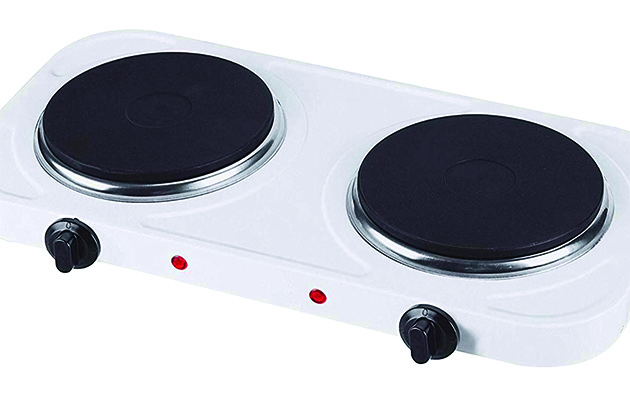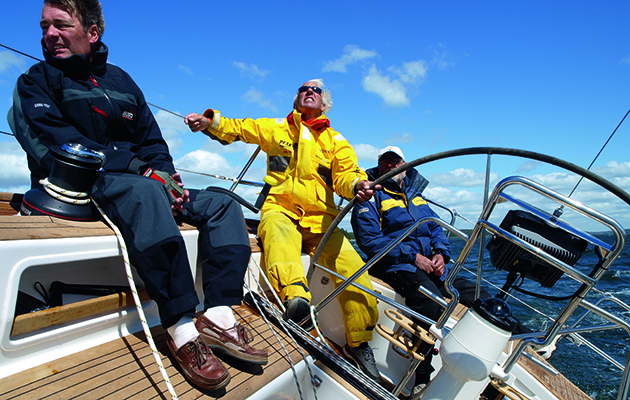Yachting Monthly experts and seasoned skippers share their advice on a whole range of issues for the cruising sailor. Do you have a tip to share? Email us at yachtingmonthly@ti-media.com
Keeping furlers in check
As a cruiser, I love the increased ease of taking a headsail ‘down’ by furler. It is a great advantage compared with a headsail on hanks, especially if the wind is blowing and the seas are making work on the foredeck a challenge.
However, I am absolutely no advocate of using a furler for actual ‘furling’, for the simple reason that the shape of the headsail changes too much and becomes inefficient — the exception being furling a headsail downwind, for which it works fine.

BEFORE: A foot can easily unlock the line. Credit: Harry Dekkers
I am writing this note on furlers during our holiday on board a Victoire 933 (a conservative 9.33m GRP design from Koopmans Sr.) from the Royal Netherlands Navy YC, which we are sailing in Danish and Swedish waters.
As with charter yachts, it is a good idea, as well as a necessity, to make a thorough check around the vessel and all its ‘systems’ before setting off.

AFTER: A simple two half hitches prevents accidental opening. Credit: Harry Dekkers

Harry Deckers is an RYA Yachtmaster Offshore and has sailed around the UK singlehanded
In this case, there were only two minor issues. The first was the log transducer that was blocked by small barnacles, which was easy to solve by pulling out the transducer and clearing the small shells.
The next thing was easier but more essential to solve. The two pictures (above) show before and after.
The headsail furling line was conveniently run through a clutch, which makes it easy to lock and unlock.
However, what would happen if you or one of your crew accidently unlocked the rope clutch? Imagine it happening while you are busy manoeuvering in a small port while the wind is up.
An unplanned unfurling of the headsail here would guarantee disaster.
It’s always better to be safe than sorry and always put in two half hitches of which the first is ‘slipping’.
Harry Dekkers
Where to anchor

An anchorage symbol is useful but be sure it suits you first
An anchor symbol on the chart only indicates a ‘recommended anchorage’ — it does not mean that you should anchor in that exact position, nor does it imply that the area is necessarily suitable in all conditions.

Andy Du Port is a Yachtmaster Offshore
To take one obvious example, Totland Bay in the Needles Channel boasts an anchor symbol but it would clearly be folly to anchor there in a strong westerly wind.
Conversely, although there is no symbol on the chart, and so could be overlooked from a mere glance at a chart if it was not known by everyone, Osborne Bay is a popular and attractive place to bring up — though again you will find yourself on an uncomfortable lee shore when it blows from the east.
Nevertheless, I recently counted more than 20 yachts anchored there as I sailed past in an easterly Force 5.
So, what should we take away from this? Take chart anchoring symbols as a suggestion, consider the cover in prevailing weather and beware of following the masses — choose your own spot!
Andy du Port
DSC radios

DSC radios are useful for more than just emergencies
DSC radios are not just for emergencies, they are also very useful for group communications.
Maritime Mobile Service Identity (MMSI) numbers of other DSC radios can be entered and stored in your radio’s address book.
Select a name from the address book of someone you want to call – each name has a corresponding MMSI number. His or her radio will start ringing with an alert tone and automatically switch to the same channel as your radio. Then you can start chatting.
In addition, if you and other members of your group are monitoring Channel 16, you will not have to first hail one another on 16 before switching to another channel.
Ian Lockyer
Save on gas

With bottled gas getting more expensive, we have invested in a two-ring electric hob which we use when plugged in to shore power.
It sits neatly on the cooker, uses ‘free’ electricity, takes up little room when not in use and costs about £30. Less than one bottle of gas!
Andy du Port




